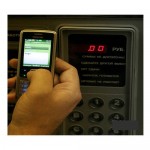After reading various articles in the media and elsewhere, or examining your competitors’ products – you may start to ponder if the “Internet of Things” really matters. That’s a fair question, and the same can often be asked when a new technology emerges from the horizon. However unlike other changes in technology the leap to an IoT can be considered as revolutionary instead of evolutionary – and thus it does matter.
But why? As mentioned in our previous articles, the ability for something to be connected to the a network is tremendous. With intelligence provided by bespoke hardware at the client side, they can now receive or send data when the device is programmed to do so at an appropriate time. Consider the following examples:
Monitoring temperatures of multiple points in a production facility – No longer do you need to use a wired connection back to the main system – instead each temperature sensor can be equipped with a wireless module and communicate to the server via WiFi. Sensors can be relocated, added, or deleted without the effort to rewire – and with the advances in energy harvesting they can possibly be self-powered. A minimal microcontroller between the sensor and wireless module can also continuously monitor all status and notify the server of an error – and the server can detect a total failure and alert technicians without delay via many channels.
Consumer-device interaction – By now you’ve seen the LED light that can be controlled via a smartphone. However that technology can be utilised in many more ways – imagine if you arrived home at night, and your car communicates with the home system to turn on various lights, HVAC, and even turns on the stereo. Or an alarm system that emails, tweets and texts you images of the room where motion is detected – as well as alerting the authorities.
Upgrading existing M2M connectivity solutions – If you have existing devices that communicate with a server over custom wireless data solutions or expensive GPRS packet-data links – there may be an opportunity to upgrade the communications to IP via WiFi.
For example, if you have twenty vending machines in an airport that has terminal-wide WiFi access – by switching the communications from cellular to WiFi you not only save on line subscription and data charges, you can also interact more easily with the machines for status updates and alerts. Converting equipment to standard wired or wireless IP communciations allows integration with a wide variety of current and future IoT systems giving you flexibility and more possibilities than ever before.
The Internet of Things is important, it does matter – almost anything can communicate with anything or anyone. It’s a simple statement, that describes an almost infinite amount of possibilities. And the race is on to introduce this functionality to existing and new products. Customers are becoming more savvy with the Internet and networking – and understand how it works. By creating solutions that makes life easier, simpler and more convenient for your customers via IoT technology you will be ahead of the pack – to your benefit.
If you want to find out more, move forward with your own designs to make them IoT-ready, or don’t know where to start – partner with an organisation who can pull together the software, hardware and know-how to make it happen – the LX Group.
Here at the LX Group we can discuss and understand your requirements and goals – then help you navigate the varioushardware and other options available to help solve your problems. We can create or tailor just about anything from awireless temperature sensor to a complete Internet-enabled system for you. For more information or a confidential discussion about your ideas and how we can help bring them to life – click here to contact us, or telephone 1800 810 124.
LX is an award-winning electronics design company based in Sydney, Australia. LX services include full turnkey design, electronics, hardware, software and firmware design. LX specialises in embedded systems and wireless technologies design. https://lx-group.com.au Published by LX Pty Ltd for itself and the LX Group of companies, including LX Design House, LX Solutions and LX Consulting, LX Innovations.




